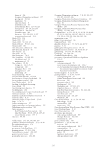13 – Kati Thanda-Lake Eyre – not just a wildlife paradise 125 November. Each person paid $180–200 for their lifetime flight of an hour over the lake. A few people would also fly up the rivers to Birdsville, Bedourie and Innamincka over a couple of days, staying overnight in one of these towns. Our biggest challenge was coping with the demand for good accommodation. The demand to see the lake has meant that we more than doubled the number of rooms available in William Creek from ~30 to 70 beds. We are also improving the style of accommodation and services. We have installed access to potable water and underground power. By building our solar generation capacity, we have managed to reduce the eight diesel generators to one. We are increasingly adopting the philosophy of ecological sustainability wherever possible, reflecting our values and those of our visiting tourists. The very large injection of tourists into our business was also very important for the local economy, providing jobs for local people. The Australian Government also built a bitumen airstrip, replacing the dirt one. This was also critical. It allowed larger, high- performance aircraft and jets to land and also limited to the damage to aircraft generally, encouraging more visitors. At the same time, we upgraded the refuelling system to ensure we could adequately service the increasing number of aircraft landing. Importantly even in the dry periods, we have an increasing number of tourists wanting to experience outback Australia and visit the vast dryness of Kati Thanda-Lake Eyre. We see more opportunities to cover the vast outback distances in our aircraft and take visitors to other magnificent places in the Lake Eyre Basin. Fig. 13.2. Kati Thanda-Lake Eyre is one of Australia’s great natural wonders, revealing incredible colours and vistas whether flooded or dry (photo, R.T. Kingsford).
Downloaded from CSIRO with access from at 216.73.216.140 on Nov 22, 2025, 8:39 AM. (c) CSIRO Publishing

















































































































































































































































































